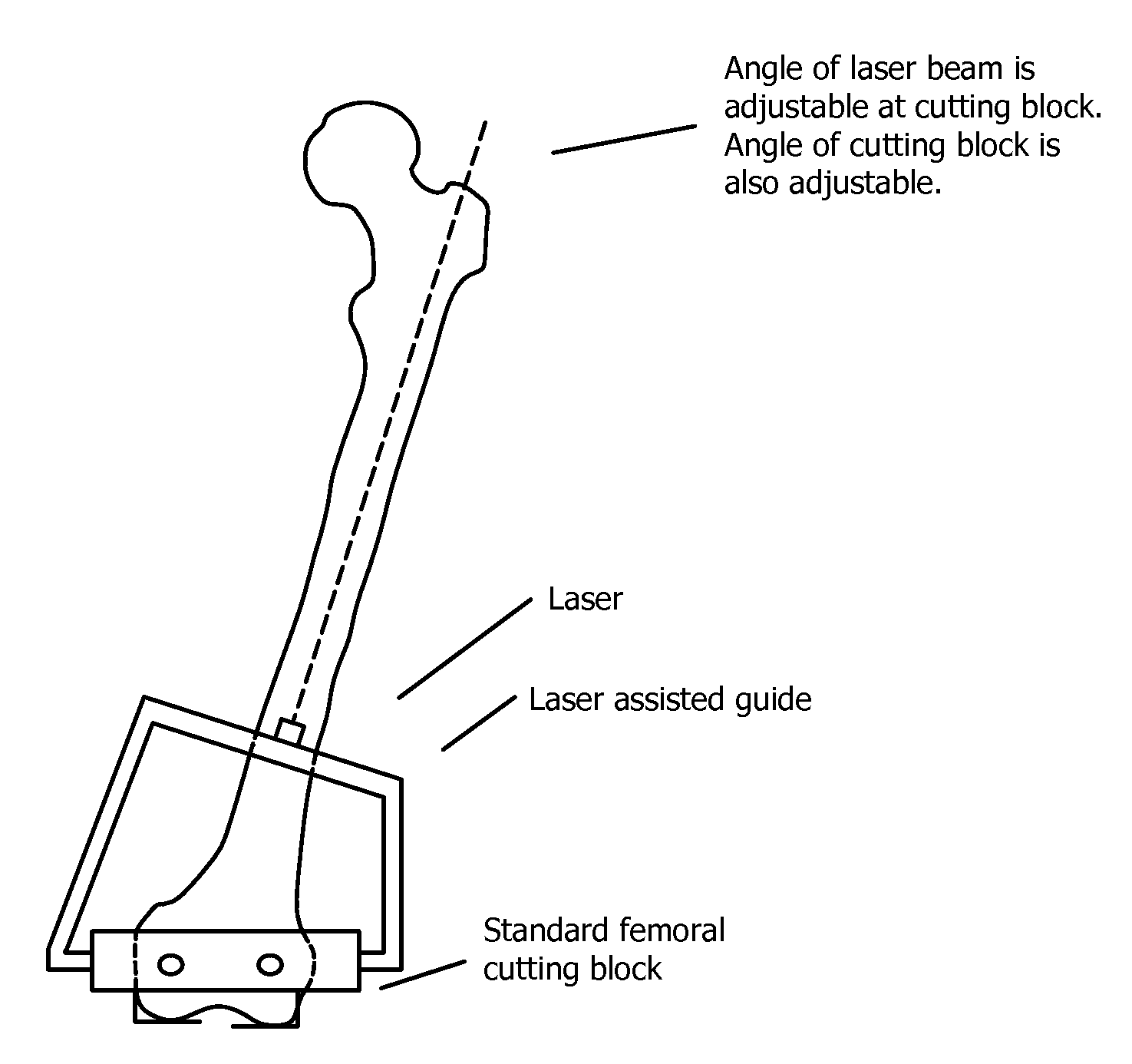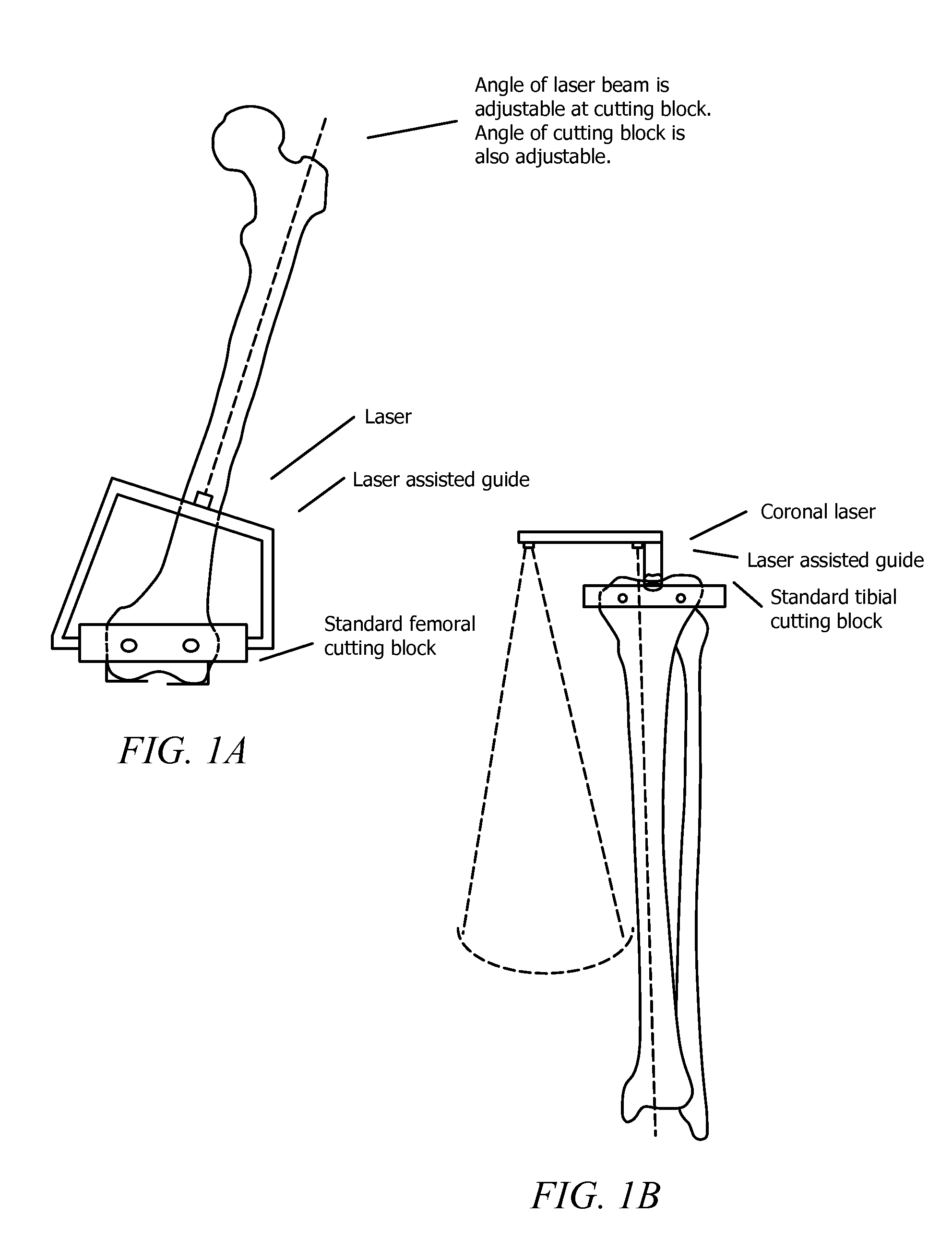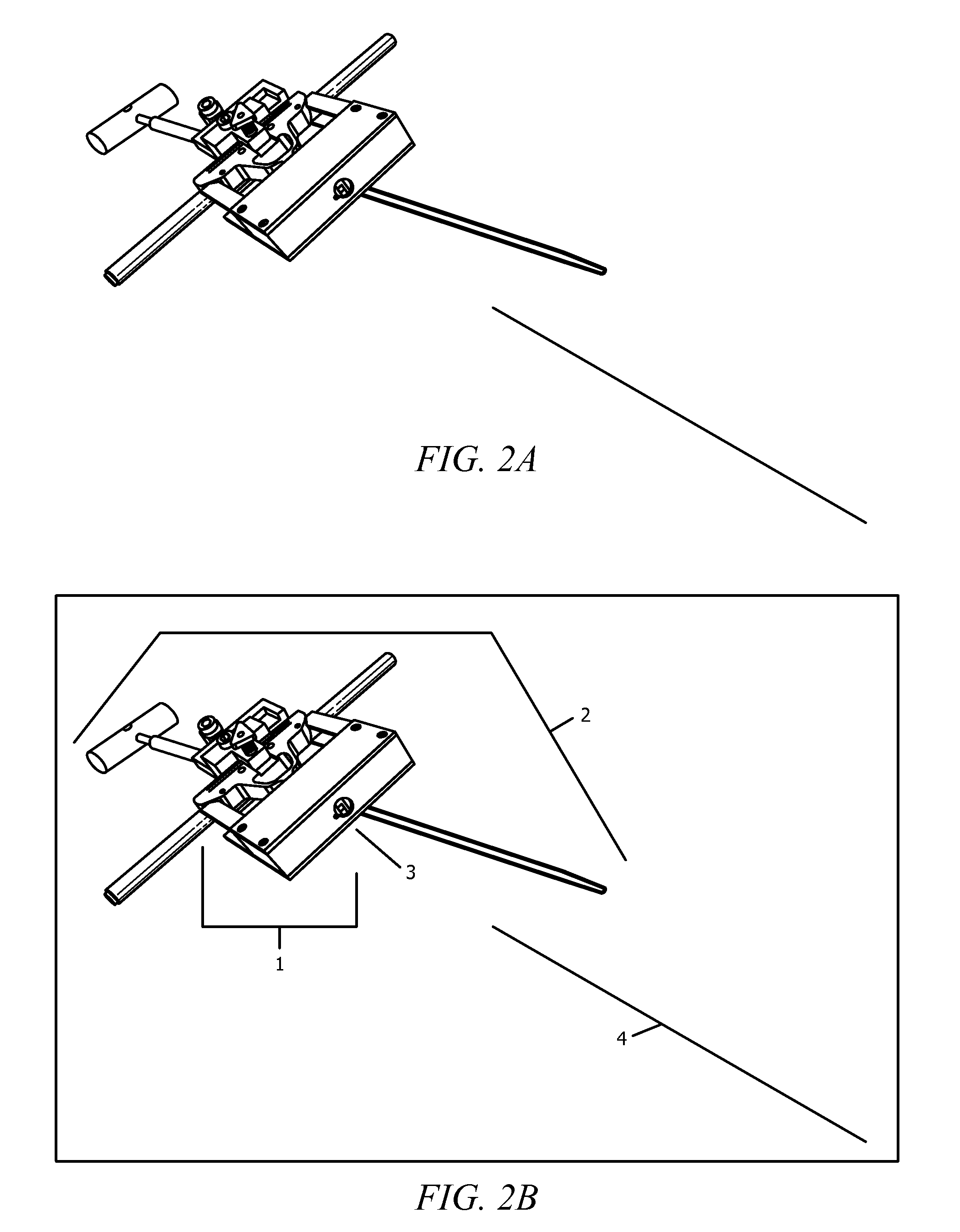Laser assisted total joint arthroplasty
- Summary
- Abstract
- Description
- Claims
- Application Information
AI Technical Summary
Benefits of technology
Problems solved by technology
Method used
Image
Examples
Embodiment Construction
[0053]The present invention provides an improved surgical method of performing total joint arthroplasties and devices utilized therein. The present invention further provides an improved method of performing partial joint arthroplasties and devices utilized therein.
[0054]The present invention may be utilized with any type of arthroplasty, including but not limited to knee arthroplasty, hip arthroplasty, ankle arthroplasty, and shoulder arthroplasty. Furthermore, the present invention is additionally applicable to any type of surgical procedure wherein the alignment of components or instruments is necessary or desired, or wherein the precise location of incisions or cuts is necessary or desired.
[0055]Although the present invention is broadly applicable as described above, the claimed laser-guidance system will be further described herein by way of a non-limiting depiction of a knee arthroplasty and the instrumentation utilized therein. Such description is not intended to limit the pr...
PUM
 Login to View More
Login to View More Abstract
Description
Claims
Application Information
 Login to View More
Login to View More - R&D
- Intellectual Property
- Life Sciences
- Materials
- Tech Scout
- Unparalleled Data Quality
- Higher Quality Content
- 60% Fewer Hallucinations
Browse by: Latest US Patents, China's latest patents, Technical Efficacy Thesaurus, Application Domain, Technology Topic, Popular Technical Reports.
© 2025 PatSnap. All rights reserved.Legal|Privacy policy|Modern Slavery Act Transparency Statement|Sitemap|About US| Contact US: help@patsnap.com



